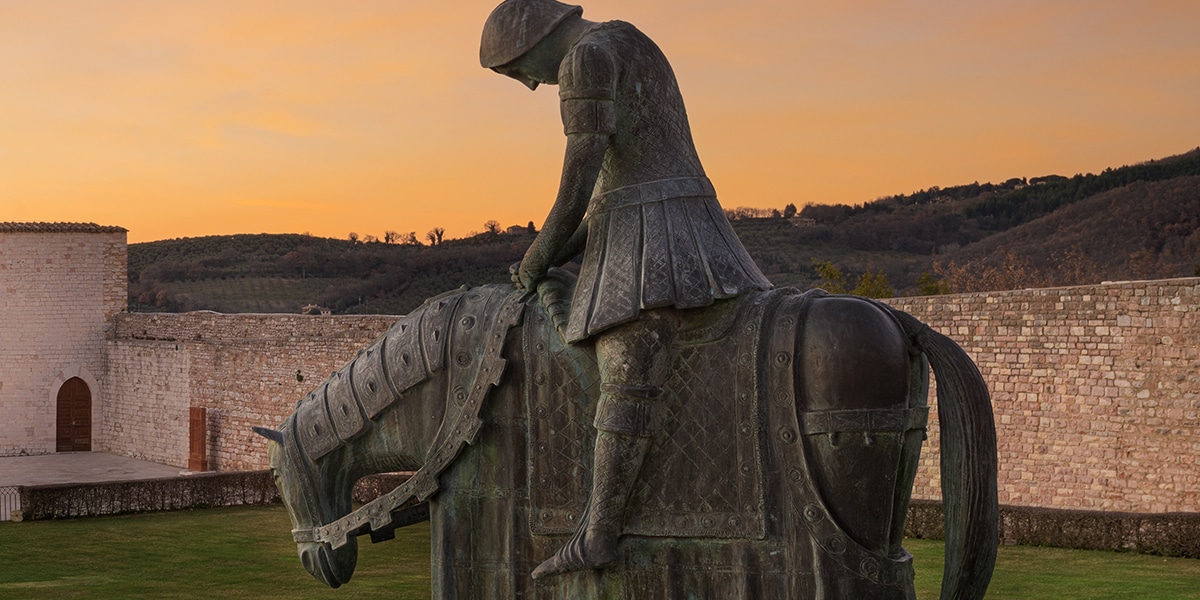Jesus was a healer, not as a practitioner of medical science but rather as a miracle worker. The Gospels are full of reports about his miraculous activities. Indeed, almost one third of Mark’s Gospel is devoted to Jesus’ miracles. The first half of John’s Gospel contains seven miracles known as “signs” that range from Jesus turning water into wine at the wedding feast at Cana to raising his friend Lazarus from the dead. According to one estimate (counting repeated passages only once), the four Gospels include 17 healings, six exorcisms and eight nature miracles.
The Makings of a Miracle
The common definition of miracle is an event that is an exception to the laws of nature. In the Bible, however, what we call miracles are described more loosely as “signs and wonders” or acts of power that are attributed to God.
Moses, in the early chapters of Exodus, and the prophets Elijah and Elisha, later in the Old Testament, perform many acts of power as instruments of God. Ancient Israel crossing the Red Sea under Moses’s leadership and crossing the Jordan River with Joshua are celebrated in the Bible as signs that God was at work in these events on behalf of his people.
New Testament scholar John P. Meier observes that a miracle has three basic components:
(1) It must be an unusual event that can be perceived by others.
(2) It has no natural explanation.
(3) It appears to be the result of an act of God.
On Different Pages
Modern historians have a hard time with the Gospel miracle stories. These historians work on the following three assumptions:
(1) The past is basically the same as the present.
(2) Historical events can and should be interpreted only within the realm of earthly cause-and-effect. No supernatural interventions are allowed as explanations.
(3) There are no unique historical figures.
Of course, these were not the assumptions of the evangelists or almost anyone else in antiquity; nor are they the assumptions of most people today. Meier also notes that the basic component of a miracle—interpreting the event as an act of God—goes beyond the historian’s task and competence, and demands a philosophical or theological judgment about the authenticity of any miracle.
The Gospel writers had no doubts that Jesus was a miracle worker. They all depict him performing unusual actions, seen by others, for which there was no natural explanation, and attribute them to the power of God made manifest in Jesus. Unlike other biblical miracle workers, Jesus acts on his own authority and power, not merely as a mediator between God and other persons.
Signs of the Kingdom
The early Christians, while acknowledging the humanity of Jesus, regarded him as a unique figure in human history—the Son of God. Nevertheless, Jesus’ miracles are not so much displays of power or even proofs of his divinity as they are signs of the presence of God’s Kingdom in the person of Jesus. Their significance in Jesus’ life and ministry is captured nicely in his own words: “If it is by the finger of God that I cast out the demons, then the Kingdom of God has come to you” (Lk 11:20). This saying provides the key to a proper understanding of Jesus’ miracles.
During his lifetime there was little doubt about Jesus’ ability to heal and perform other types of miracles. Even his opponents acknowledged his power to do such actions. Their question concerned the origin or source of Jesus’ powers. Did his power come from God or from Satan? In response, Jesus tried to show the absurdity of their question, because his miracles were clearly signs of God’s victory over Satan and the defeat of the powers of evil.
Miracles Lead to Discipleship
Matthew offers a collection of stories about Jesus’ miracles or mighty acts in Chapters 8—9. His theological point is that Jesus the teacher was powerful not only in word (the Sermon on the Mount) but also in deed (the miracles collection). Matthew records three cycles of three miracles each, interrupted by teachings about following Jesus. In using this structure, Matthew is suggesting that the mighty acts of Jesus demand the response of discipleship. Focusing on these texts can help us to open up and better understand the literary, historical and theological dimensions of the miracle stories in the Gospels.
Healing Miracles
The majority of the miracle accounts Matthew presents in these two chapters are healing stories. Jesus heals a man with leprosy, the paralyzed servant of a Roman centurion, Peter’s mother-in-law who was suffering from a fever, another paralyzed man, a woman with a flow of blood, two blind men and a man unable to speak.
In each case we get some minimal information about the person’s medical condition, but never anything like a full diagnosis. This was not the evangelist’s real interest. In most instances the sick person or a friend approaches Jesus in a spirit of faith and asks for healing. Jesus responds with words or sometimes with a touch, and the healing is immediate and complete. The narratives often end with expressions of awe on the part of the audience or with some other “proof” that a miraculous healing has taken place.
Matthew has taken these miracle stories from Mark or some other source and shaped them to bring out his favorite theme of “praying faith.” His special interest in Jesus’ healings was not so much in the spectacular displays of Jesus’ power but rather in the prayerful encounter between persons in great need and Jesus the powerful healer.
These stories had been handed on and reshaped in the early Church for many years before Matthew came to write down his Gospel near the end of the first century A.D. Those who passed them on were less interested in piling up factual details than they were in exploring the significance of these stories for their lives—and our own.
‘The Dead Are Raised’
The accounts about Jesus restoring dead people to life represent a special category among the healing narratives. In one such story Jesus restores to life the daughter of a synagogue leader who tells Jesus of her death. “[B]ut come and lay your hand on her, and she will live” (Mt 9:18).
Similar stories are told by Luke about the son of the widow of Nain and by John about Jesus’ friend Lazarus. While we assume that these persons would eventually die a second time, the narratives foreshadow the Resurrection of Jesus and also are signs of the Messiah’s presence among us: “the blind receive their sight, the lame walk…the dead are raised” (see Mt 11:5; Lk 7:22; Is 35:5-6).
Exorcisms
Matthew also records two exorcisms, that is, the healings of persons who were thought to be possessed by demons or by Satan, the prince of demons. One is a much shorter version of Mark’s account about the Gerasene demoniac. In Matthew’s version, two possessed men behave aggressively toward others. But the demons within them recognize that Jesus is the Son of God and that his appearance marks the end of the time for their domination over the two men. Jesus sends the demons into a herd of pigs, who in turn jump into the Sea of Galilee and drown. Of course, pigs were unclean animals for Jews, and so the story has an element of insider ethnic humor.
The second exorcism story is about a man whose inability to speak is explained in terms of demonic possession. He is healed as soon as the demon is expelled.
An exorcism account is a form of a healing story. There are other exorcisms in the Gospels: the possessed man in the synagogue at Capernaum, the possessed boy and the daughter of the Syrophoenician woman. Moreover, according to Luke, Mary Magdalene (“from whom seven demons had gone out”) had been healed of demonic possession, presumably by Jesus.
Expelling ‘Demons’
For historians, the problem raised by Jesus’ exorcisms is the nature of the maladies involved. Were they a sign that the persons he healed were actually taken over by demonic supernatural forces? Or were their symptoms due to conditions that psychiatrists today might diagnose as mania, depression or schizophrenia?
Was their abnormal and aggressive behavior due to the tense and repressive political situations in which they lived? To what extent are these stories imaginative representations of Jesus’ victory over the forces of evil in the world? Elements from any or all of these explanations may have been factors underlying the Gospels’ exorcism narratives.
Nature Miracles
There is one nature miracle in Matthew 8—9. Jesus stops a storm on the Sea of Galilee by his words alone: “[H]e got up and rebuked the winds and the sea; and there was dead calm” (8:26). Other nature miracles in Matthew (and other Gospels) include the feedings of the 5,000 and the 4,000, Jesus walking on the water, Peter finding a coin in the fish’s mouth and the withering of the fig tree. John’s Gospel contains accounts about the changing of water into wine at the wedding feast at Cana and the miraculous catch of fish (2:1-11, 21:1-14; see also Lk 5:1-11).
The nature miracles are presented as events in Jesus’ ministry that are dramatic exceptions to the laws of nature. They sometimes meet real human needs like feeding crowds and rescuing disciples. They are among the most spectacular displays of power on Jesus’ part and mark him as unique among humans and, indeed, as divine.
In walking on the water and in feeding the poor among God’s people, Jesus does what God does in the Old Testament. The way in which the nature miracles are narrated evokes many biblical motifs and precedents, and highlights the theological dimensions of Jesus’ person and actions. Even more than the healings and exorcisms, the nature miracles are vehicles of early Christian theology.
Jesus, the Miracle Worker
The miracles of Jesus are a major part of the Gospel tradition. Their prominence indicates that Jesus’ contemporaries—and even his enemies—acknowledged that he was a miracle worker. But the nature of our sources may not allow us to answer definitively all the questions posed by modern historians.
Early Christians were not seeking to simply recount the factual details of Jesus’ marvelous actions. Rather, following the lead of Jesus himself, they found in the miracles powerful signs of the presence of the Kingdom of God and testimony to Jesus as the proclaimer and embodiment of God’s Kingdom. Believers today follow in the tradition of these early Christians.









2 thoughts on “Miracles: Signs of God’s Presence”
Pingback: How To Get What I Want In Life - Jake Ducey
Dios conmigo 🙏 siempre ✨